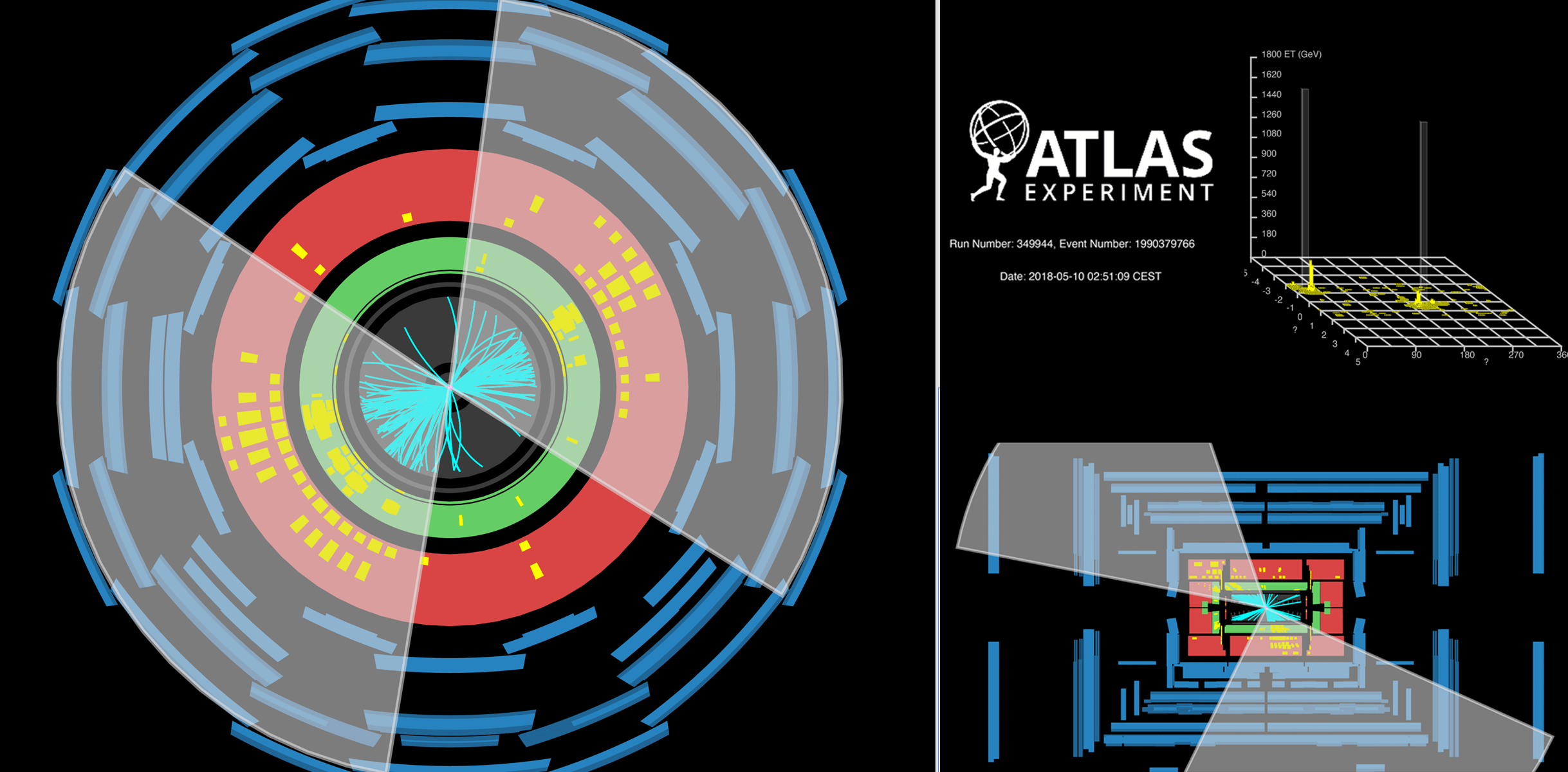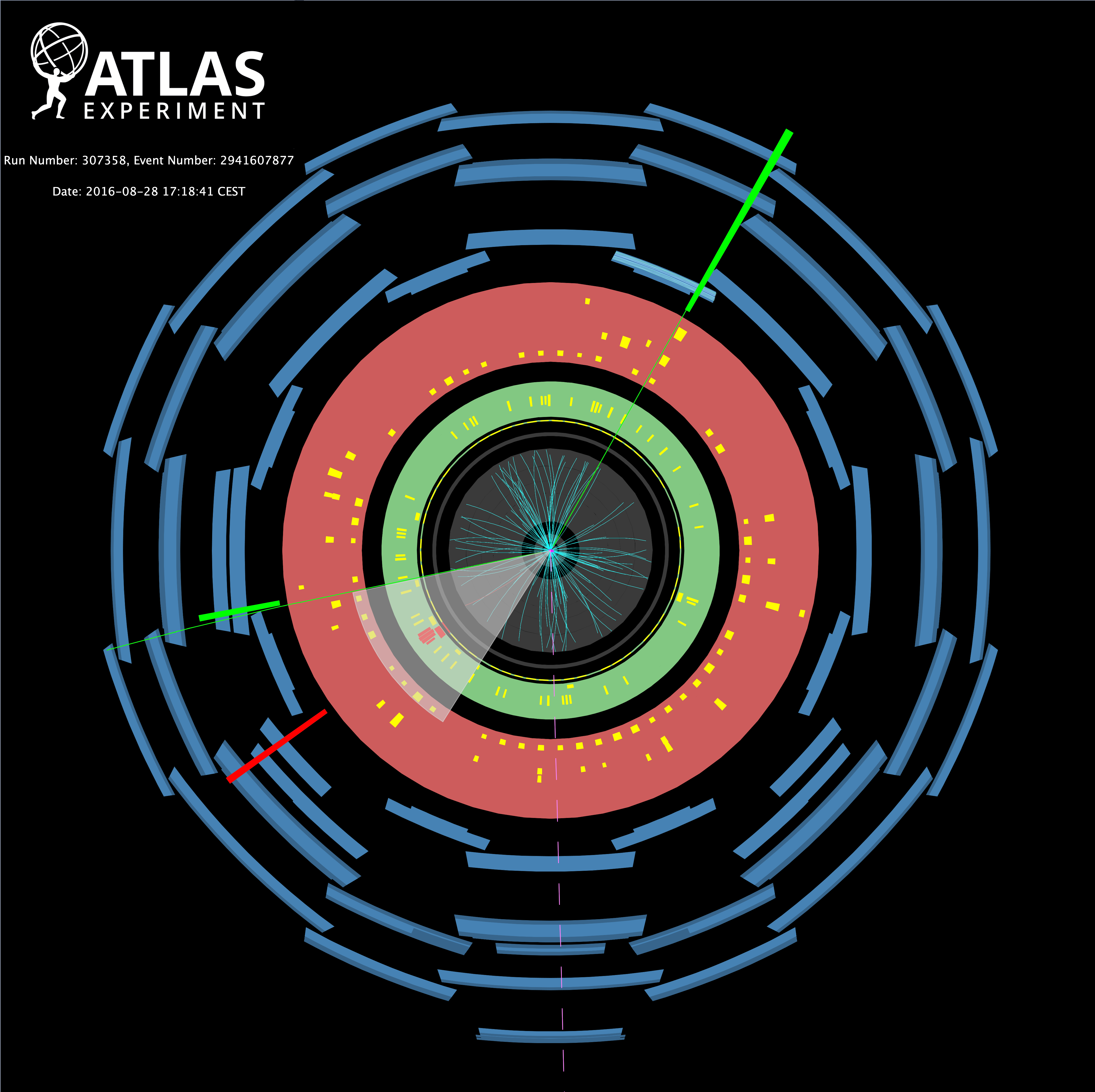When jets go dark: identifying elusive "dark jets" at ATLAS
6 September 2023 | By
When protons smash together in the Large Hadron Collider, they often produce sprays of particles known as “jets”. These jets are created through interactions of the strong force, or quantum chromodynamics (QCD). But what if some of these jets are actually created by a hidden, “dark QCD” force? Detecting these so-called "dark jets" in ATLAS would provide evidence of this new force.

This idea – of a new, hidden force that can’t be felt by Standard-Model particles – is particularly intriguing for physicists looking to understand dark matter. Dark matter plays a pivotal role in the Universe's composition and dynamics, and dark QCD could be responsible for dark-matter-candidate particles.
For the very first time, the ATLAS Collaboration has searched for dark jets that closely resemble QCD jets. Instead of originating from Standard-Model particles, these dark jets would be produced through a new, heavy particle called the Z' boson (see Figure 1). As the Z’ boson decays, it sparks the creation of two dark jets filled with composite and invisible particles known as "dark mesons". These dark mesons subsequently decay into visible, Standard-Model particles – resulting in jet-like signal in the ATLAS detector.
Sprays of particles could be created by a new "dark" force. Such "dark jets" may strongly resemble those created by Standard-Model particles.
The nature of this signal depends on the behaviour of the dark mesons. If the dark mesons live briefly before decaying, the jets will begin further away from the main interaction point (an "emerging jet"). If some of the dark mesons are stable and escape the detector without leaving a trace, the jets will be "semi-visible". However, if the dark mesons decay rapidly into Standard-Model particles, distinguishing dark jets from QCD jets gets tricky. Luckily, these dark jets will have some distinct features: they will be wider and contain many more charged particles than their Standard-Model counterparts.
To search for such signatures, ATLAS researchers looked for a localised excess above a smooth Standard-Model background in the invariant mass distribution of two jets. A dark-jet signal would result in a characteristic peak in this distribution around the mass of the Z’ boson. To increase the signal-to-background ratio, physicists selected jets based on their comparatively high charged-particle multiplicity (see Figure 2). Researchers used a new discriminating variable to dissociate the jet charged-particle multiplicity from the di-jet invariant mass. This variable helped them select dark jets with high efficiency, without changing the shape of the dijet invariant mass distribution.


After accounting for Standard-Model background processes and comparing them to the full ATLAS Run-2 dataset (139 fb-1), researchers found no hint of the Z’ boson. This novel search sets the first limits on QCD-like dark-jet production, complementing other analyses to cover more ground in terms of dark-QCD parameters. Figure 3 shows the constraints on the maximum rate of production and subsequent decay of the Z’ boson at the 95% confidence level for one of the benchmark models studied. As no significant excess was observed, scientists excluded masses of the Z' boson for several dark-QCD models and, in the model presented in Figure 3, Z' boson masses were excluded up to around 3 TeV.
This analysis paves the way for further searches for dark QCD using information about the substructure of jets. As more advanced and effective dark-jet tagging techniques become available, the reach of these searches will be further improved.
Learn more
- Search for Resonant Production of Dark Quarks in the Di-jet Final State with the ATLAS Detector (ATLAS-CONF-2023-047)
- Search for non-resonant production of semi-visible jets using Run 2 data in ATLAS (arXiv: 2305.18037, see figures)
- CMS Collaboration: Search for resonant production of strongly coupled dark matter in proton–proton collisions at 13 TeV (arXiv: 2112.11125)
- CMS Collaboration: Search for new particles decaying to a jet and an emerging jet (arXiv: 1810.10069)
- Not a jet all the way: is dark matter hiding in plain sight? ATLAS Physics Briefing, May 2023




